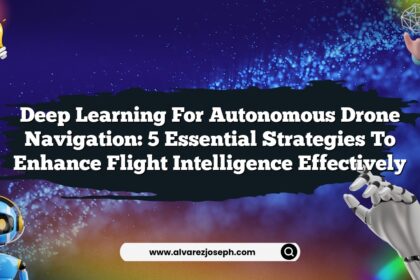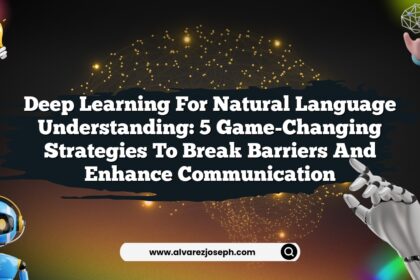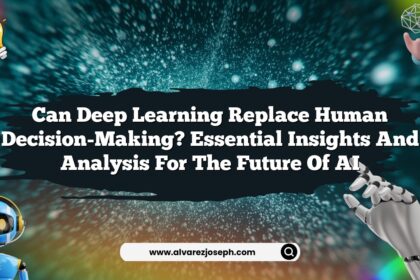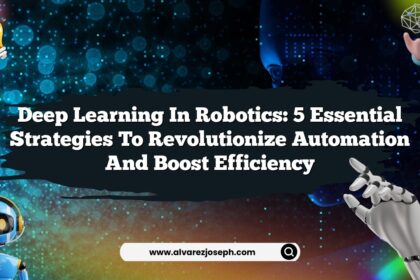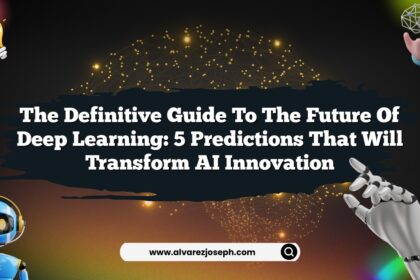Imagine a world where machines learn from data, getting smarter with each interaction. It’s a bit like that friend who constantly picks up new hobbies—first, they dabbled in painting, then they mastered salsa dancing, and now they’re coaching a local soccer team. This is the essence of machine learning (ML), and amidst this ever-evolving landscape, two heavyweights have emerged: traditional machine learning and deep learning. But you might wonder, is deep learning really better than its traditional counterpart? Let’s dive into this captivating debate.
Understanding Traditional Machine Learning
Traditional machine learning encompasses a wide array of algorithms that can learn from and make predictions based on data. These algorithms can be like a buffet where you can pick and choose based on your needs. Common techniques include:
- Linear Regression: Simple yet effective for predicting numerical outcomes.
- Decision Trees: These work like flowcharts, helping us make decisions by splitting data into branches.
- Support Vector Machines (SVM): Finding the ideal boundary to separate various classes in data.
- k-Nearest Neighbors (k-NN): Making decisions based on the proximity of data points.
While these models are often easier to interpret and require less computational power, they sometimes struggle with complex tasks that involve vast datasets. They can feel a bit like trying to navigate a sprawling city with a simple map—helpful, but not always sufficient.
The Rise of Deep Learning
On the other side of this intellectual boxing ring is deep learning, a subset of machine learning inspired by the human brain’s neural networks. Picture it as a sophisticated GPS that not only shows you the route but also learns your preferences and suggests pit stops along the way. Deep learning excels in areas like image and speech recognition, natural language processing, and even playing video games at superhuman levels.
Here’s a quick look at what makes deep learning tick:
- Neural Networks: Layered structures that process data through interconnected nodes, mimicking the brain’s architecture.
- Convolutional Neural Networks (CNNs): Perfect for image processing tasks, they analyze visual data in layers.
- Recurrent Neural Networks (RNNs): Suited for sequential data, such as time series or text, allowing memories of past inputs to shape future predictions.
Deep learning models, however, come with their own challenges. They often require massive datasets and considerable computational power, like a luxury car that demands high-octane fuel to run efficiently.
Comparisons: Traditional vs. Deep Learning
Performance and Accuracy
When it comes to performance and accuracy, deep learning tends to outperform traditional machine learning in tasks involving complex patterns and large datasets. Think of deep learning as the Olympic athlete of the two—while traditional models might jog around the block, deep learning is sprinting towards the finish line, especially in domains such as:
- Image recognition (e.g., identifying objects in photos)
- Language translation (e.g., real-time speech translation)
- Autonomous driving (e.g., interpreting surroundings)
However, if you’re dealing with simpler problems, traditional machine learning might just be the trusty bicycle you need—efficient, easy to understand, and requiring minimal resources.
Interpretability and Transparency
Now, let’s talk about interpretability. Traditional models shine here. They often provide clear insights into how they make decisions. For instance, a linear regression model will show you exactly how much weight each variable carries, like a teacher handing back papers with detailed feedback. In contrast, deep learning models can feel more like a magical black box—great at performing tasks but elusive when it comes to understanding their internal workings.
This lack of interpretability can lead to skepticism, especially in regulated fields like healthcare or finance, where understanding the “why” behind a decision is crucial. It’s like trying to take a prescription without knowing the potential side effects—dangerous, right?
Data Requirements
When it comes to data requirements, deep learning often takes the cake, needing vast amounts of labeled data to train effectively. Traditional machine learning, on the other hand, can perform admirably even with smaller datasets. If you’re working with limited data, traditional methods can be more suitable. It’s like cooking with a single spice versus trying to create a gourmet dish—sometimes less is more.
Applications: Where Each Shines
To understand the ongoing debate of deep learning versus traditional machine learning, it helps to look at where each excels. Traditional machine learning algorithms are often used in scenarios such as:
- Predictive modeling in finance (e.g., credit scoring)
- Customer segmentation in marketing
- Fraud detection in banking
Deep learning finds its niche in more complex domains:
- Self-driving cars, using CNNs for real-time object detection
- Voice assistants like Siri and Alexa, relying on RNNs to understand spoken language
- Image generation, producing stunning visuals through Generative Adversarial Networks (GANs)
Ultimately, the choice between the two often boils down to the specific use case and data availability. If you’re developing a user-friendly app that predicts loan approvals, traditional machine learning might suit you better. But if you’re dreaming up an innovative autonomous drone that navigates urban landscapes, deep learning could be your best bet.
Future Trends and Innovations
As we gaze into the crystal ball of machine learning’s future, we see both traditional and deep learning evolving. Researchers are continuously refining algorithms, making them more efficient and accessible. For example, the rise of transfer learning in deep learning allows models trained on one task to be adapted quickly for another, making them more versatile.
Moreover, hybrid approaches that combine the interpretability of traditional models with the power of deep learning are gaining traction. Imagine a deep learning model that can also tell you why it made a specific prediction! It’s akin to having a GPS that not only shows you the way but also gives you a history of the best routes taken.
Real-world Challenges
However, as with any burgeoning field, challenges abound. The debate over deep learning versus traditional machine learning isn’t merely academic; it has real-world implications. For instance, deep learning models can be data-hungry, making them less practical for startups or smaller organizations with limited datasets. On the flip side, traditional algorithms may not keep pace with the growing complexity of tasks required in today’s digital landscape.
Moreover, ethical considerations come into play. A model’s accuracy is only as good as the data fed into it. Biased datasets can lead to biased outcomes, a pitfall that both machine learning strategies must navigate.
Final Thoughts: What’s the Verdict?
So, is deep learning better than traditional machine learning? The answer isn’t black and white. Each approach has its strengths, weaknesses, and suitable contexts. Deep learning excels in handling vast amounts of unstructured data and complex tasks, while traditional machine learning shines in interpretability and efficiency with smaller datasets.
Ultimately, the choice depends on your specific needs. If you’re embarking on a journey to tackle complex problems with rich datasets, deep learning may be your trusty steed. However, if your aim is to gain clarity and insight from simpler data, traditional machine learning could be your best friend.
Quick Summary
- Traditional machine learning provides simpler models suitable for smaller datasets.
- Deep learning excels in complex tasks involving large datasets.
- Traditional models offer better interpretability, while deep learning can feel like a black box.
- Both have unique applications in various industries.
- The future is likely to see hybrid approaches combining the strengths of both methods.
- Real-world challenges include data availability and ethical considerations around biases.
- Your choice should be guided by specific needs and contexts.
- Data requirements differ: deep learning often needs vast amounts of data.
- Continuous evolution is seen in both fields.
- The debate continues, with both methods playing vital roles in the machine learning landscape.
Frequently Asked Questions
What is the main difference between traditional machine learning and deep learning?
Traditional machine learning relies on simpler models and smaller datasets, while deep learning employs complex neural networks requiring vast amounts of data.
When should I use traditional machine learning?
Use traditional machine learning when working with smaller, structured datasets that require high interpretability and lower computational power.
What are the benefits of deep learning?
Deep learning can handle complex tasks, learn from unstructured data, and often achieves higher accuracy in challenging domains such as image and speech recognition.
Is deep learning always better?
Not necessarily! Deep learning is best suited for specific tasks with ample data. Traditional methods can outperform in simpler scenarios or when interpretability is crucial.
Can both methods be used together?
Absolutely! Hybrid approaches that leverage the strengths of both traditional and deep learning are becoming increasingly popular.
How do ethical concerns impact machine learning?
Ethical concerns arise when biased datasets lead to unfair outcomes, affecting both traditional and deep learning models. Addressing these biases is essential for responsible AI development.





